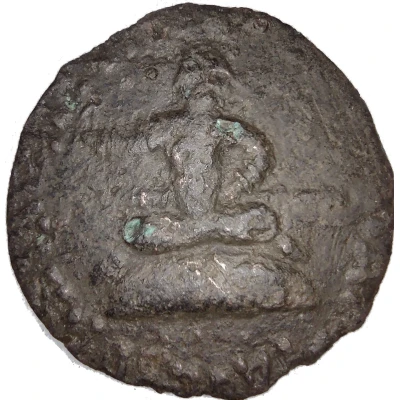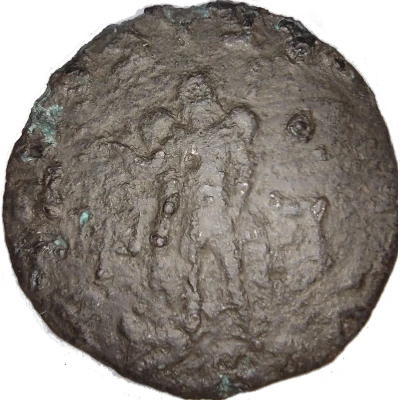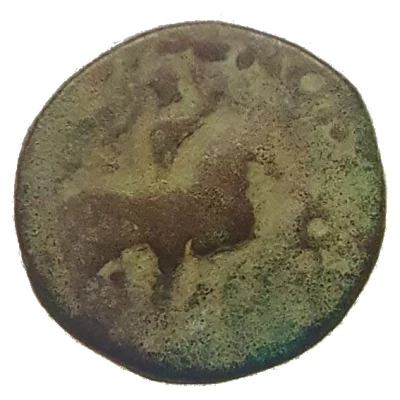


Tri-Chalkon- Azes II Indo-Scythian Kingdom 35 BC - 5 AD
| Bronze | 8.25 g | 22 mm |
| Issuer | Indo-Scythian Kingdom |
|---|---|
| King | Azes II ("Aζης) (35 BC - 12 BC) |
| Type | Standard circulation coin |
| Years | 35 BC - 5 AD |
| Value | Pentachalkon (5⁄48) |
| Currency | Drachm (200 BC to 400 AC) |
| Composition | Bronze |
| Weight | 8.25 g |
| Diameter | 22 mm |
| Thickness | 2.5 mm |
| Shape | Round (irregular) |
| Technique | Hammered |
| Orientation | Coin alignment ↑↓ |
| Demonetized | Yes |
| Updated | 2024-10-10 |
| Numista | N#393769 |
|---|---|
| Rarity index | 97% |
Reverse
Winged Hermes standing, facing, holding caduceus, control marks to left and right.
Hermes standing facing, monograms at left and right, Kharosthi legend around
Script: Kharosthi
Lettering: Maharajasa rajarajasa mahatasa / Ayasa
Edge
Plain
Comment
Coin of Azes II, with king seated, holding a drawn sword and a whip. Azes II (reigned circa 35-12 BCE), may have been the last Indo-Scythian king in northern India. After the death of Azes II, the rule of the Indo-Scythians in northwestern India finally crumbled with the conquest of the Kushans, one of the five tribes of the Yuezhi who had lived in Bactria for more than a century, and who were then expanding into India to create a Kushan Empire.
https://www.wildwinds.com/coins/greece/indo_scythians/azes/i.html
Interesting fact
One interesting fact about the Tri-Chalkon-Azes II coin is that it features a unique blend of Greek and Indian styles, reflecting the cultural exchange and syncretism that occurred during the Indo-Scythian period. The coin's obverse side features a Greek-style portrait of Azes II, while the reverse side depicts a seated figure of the Hindu deity Zeus-Mitra, highlighting the cultural fusion that characterized the Indo-Scythian Kingdom.



